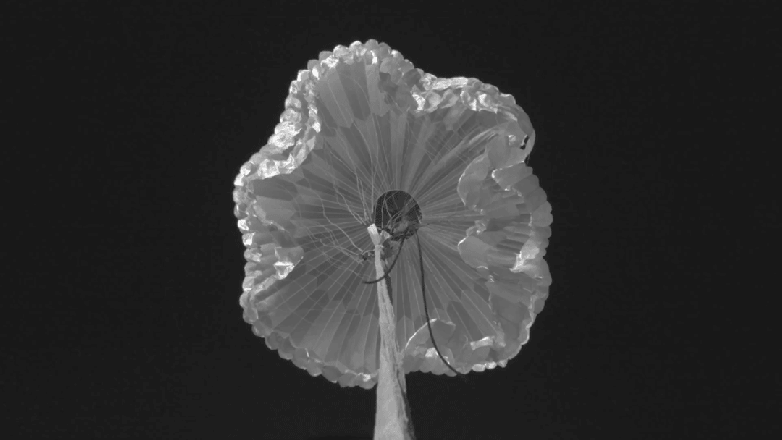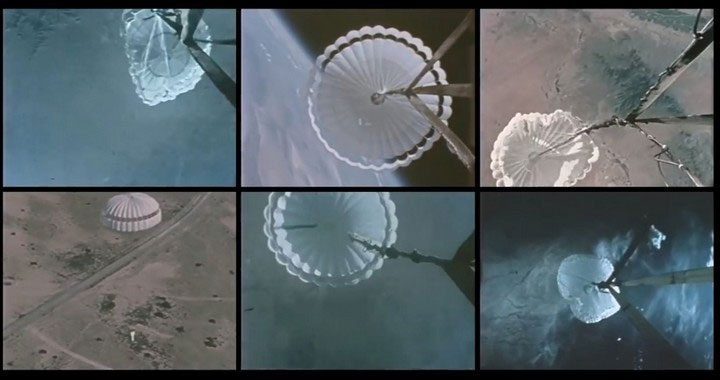NASA tested parachutes for the Mars mission,
The parachute that NASA successfully tested has recently been able to pull heavy objects up to 37 tons of safe ground. This will be an extremely important part to help bring the spacecraft to the surface of Mars in mission Mars 2020.
NASA's upcoming will be a challenging and demanding journey. One of the most important stages is to ship the landing pillar. To do this, NASA is experimenting with a super-large parachute, which aims to slow down the ship's falling speed when exposed to Mars's atmosphere.

The super large parachute, which aims to slow down the ship's falling speed when exposed to Mars's atmosphere.
According to Space, NASA is currently testing a variety of parachutes and one of them has been chosen to serve the Mars 2020 mission. It is called ASPIRE .
John McNamee of NASA's Jet Propulsion Laboratory (JPL) said: " Mission Mars 2020 will carry the heaviest payload on the surface of Mars. Like many previous Mars missions, they are I only have one umbrella and it must work. "
The parachute ASPIRE has undergone many tests to evaluate the ability to hold a spacecraft when first exposed to Mars's atmosphere.
Last month, NASA tried launching spacecraft-carrying spacecraft and ASPIRE parachute. Less than two minutes after launching the Black Brant IX rocket on September 7, a ship was separated and began to fall back to Earth's atmosphere at 37km altitude above the ground. When the sensor confirms that the ship has reached a reasonable height, it will proceed to parachute at a rate of about 4/10 seconds, which is double the speed of sound.

ASPIRE parachute test.
The parachute weighs about 81kg and is made from nylon yarn for maximum durability and toughness.
During the test, the team looked at the ability of ASPIRE to slow the drop rate and found that it could withstand up to 37 tons of weight, 85% more than the weight of the ship. The cylinder that ASPIRE must weigh when it lands on the surface of Mars.
Initial testing with ASPIRE was very successful, so NASA is confident that it will also work well in the Mars 2020 mission. As expected, NASA's mission will be launched in July 2020.
- NASA prepares a new mission on Mars
- NASA's Mars mission was delayed for another 2 years
- NASA revealed the mission of the next Mars probe
- NASA tested the spacecraft to send people to Mars
- NASA's Maven spacecraft approached Mars
- NASA is about to launch a ship to study the Martian atmosphere
- The Maven is about to enter Mars's orbit
- NASA launched the Mars probe
- NASA announces a group of astronauts who are on a mission to explore Mars
- NASA recruited astronauts for Mars exploration campaign
- NASA completes mission simulation project to send people to Mars
- NASA's plan to plant potatoes on Mars
 Van Allen's belt and evidence that the Apollo 11 mission to the Moon was myth
Van Allen's belt and evidence that the Apollo 11 mission to the Moon was myth The levels of civilization in the universe (Kardashev scale)
The levels of civilization in the universe (Kardashev scale) Today Mars, the sun and the Earth are aligned
Today Mars, the sun and the Earth are aligned The Amazon owner announced a secret plan to build a space base for thousands of people
The Amazon owner announced a secret plan to build a space base for thousands of people Was there nuclear war in ancient times?
Was there nuclear war in ancient times?  What happens to dead bodies on Mars?
What happens to dead bodies on Mars?  Watch NASA probe 'capture' Martian sandstorm
Watch NASA probe 'capture' Martian sandstorm  First photo of Mars' strangely shaped moon
First photo of Mars' strangely shaped moon  What makes Mars different from Earth
What makes Mars different from Earth  How will humans build on Mars?
How will humans build on Mars? 